Walk into any office and you'll see rows of PCs connected to bulky AC UPS units. This seems inefficient when computers ultimately run on DC power. Let's explore why DC UPS solutions aren't common for personal computers.
DC UPS systems exist but aren't widely used for PCs because: 1) PC power supplies expect AC input, 2) Existing AC UPS infrastructure is deeply entrenched, 3) Voltage conversion losses are minimal with modern PSUs, and 4) Cost savings would be marginal for most users.
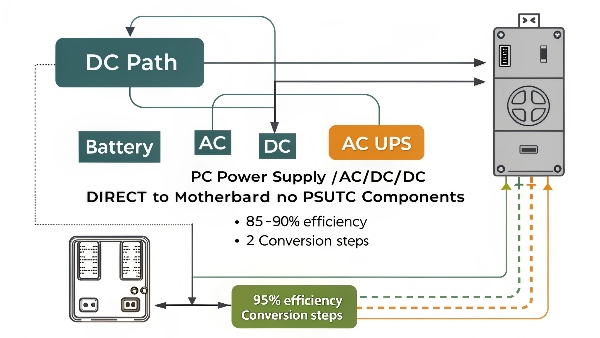
While the concept makes technical sense, real-world adoption faces multiple hurdles. Let's examine the UPS landscape more closely.
AC/DC UPS category
Power systems divide neatly into AC and DC categories, each with distinct advantages. Your choice depends entirely on what you're powering and why.
AC UPS systems dominate consumer/office markets (120V/230V devices). DC UPS systems serve telecom, industrial, and specialized applications (12V/24V/48V equipment). Hybrid systems exist but add complexity and cost.
Typical Applications:
| System Type | Common Uses | Efficiency | Size Comparison |
|---|---|---|---|
| AC UPS | PCs, Servers, Medical Equipment | 85-90% | Larger |
| DC UPS | Cell Towers, CCTV, Solar Systems | 92-95% | Smaller |
| Hybrid | Military, Research Facilities | 88-92% | Largest |
We supplied DC UPS units for a fleet of mobile command vehicles last year. While perfect for their 24V communications gear, these same units couldn't power standard office PCs without additional converters. The right tool depends on the job.
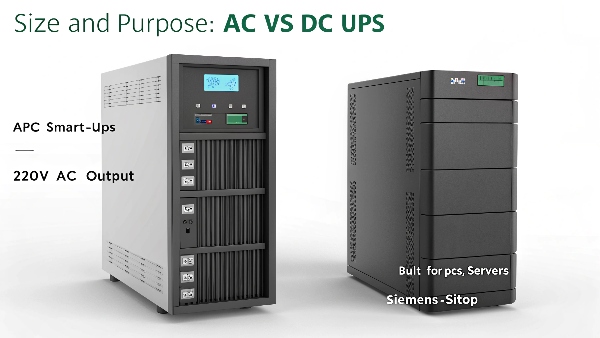
DC Power Systems Overview
DC power delivery has made a comeback in data centers and industrial settings. Understanding these systems helps explain why they haven't reached consumer PCs yet.
Modern DC power systems operate at 12V, 24V or 48V for efficiency. They eliminate AC-DC conversion steps but require: specialized equipment, new wiring standards, and compatible devices - none of which consumer PCs support currently.
DC Power Advantages:
- Fewer conversions = Higher efficiency (up to 98%)
- Smaller components = More compact systems
- Better battery integration = Simpler backup
Technical Hurdles for PC Adoption:
- ATX power standard requires AC input
- No standardized DC voltage for motherboards
- Existing AC infrastructure in buildings
- Lack of consumer DC peripherals
Google's data centers have successfully implemented 48V DC power distribution, achieving 5-7% energy savings. However, their servers use custom-designed power supplies - something impractical for the diverse PC market.
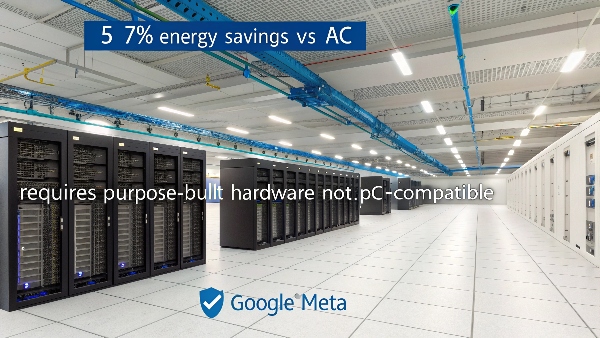
DC UPS: Uninterruptible Power Supplies
True DC UPS systems exist and perform well - just not for PCs. Their specialized nature makes them ideal candidates for particular applications.
DC UPS units provide seamless backup power to DC-powered equipment without AC conversion. Typical capacities range from 100W to 10kW, with efficiency gains of 5-15% compared to AC UPS systems in compatible applications.
DC UPS Technical Specifications:
| Parameter | Typical Value | Notes |
|---|---|---|
| Input Voltage | 12/24/48V DC | Matches system voltage |
| Output Voltage | Same as input | No conversion needed |
| Efficiency | 95-99% | No inversion losses |
| Transfer Time | <1ms | Comparable to AC UPS |
Ideal Use Cases:
- Telecommunications equipment
- Industrial control systems
- Solar power installations
- Railway signaling systems
- Marine electronics
A recent hospital project used our 24V DC UPS for their emergency lighting system. While their PCs still used traditional AC UPS, the DC units provided better reliability and faster response for critical lighting circuits.
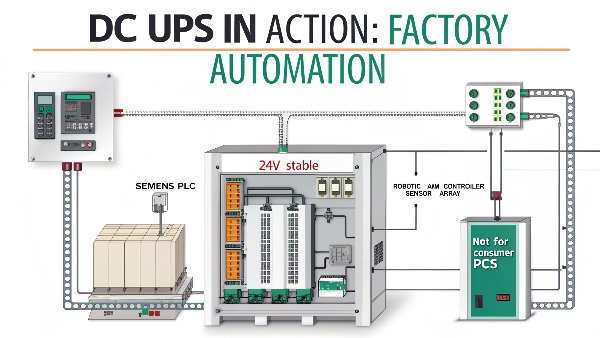
Power heroes for a stable 24 V: SITOP DC UPS
Siemens' SITOP lineup demonstrates DC UPS capabilities in industrial environments. These units solve power problems that AC UPS cannot address effectively.
SITOP DC UPS systems provide ultra-stable 24V power for industrial automation, with features like: 1) No-break power supply, 2) Voltage stabilization, 3) Wide input ranges (18-32V), and 4) Compact modular designs perfect for control cabinets.
SITOP Performance Data:
| Model | Output Current | Backup Time | Dimensions |
|---|---|---|---|
| PSU6200 | 10A | 1-30 min | 90x150x60mm |
| PSU8600 | 20A | 5-60 min | 110x180x70mm |
| PSU9100 | 40A | 10-120 min | 150x220x85mm |
Typical Industrial Applications:
- PLC controllers
- HMI panels
- Sensors and measurement devices
- Robotic control systems
- Safety circuits
We installed SITOP units in an automotive plant's robotic welding line last quarter. Their precise voltage regulation prevented micro-outages that previously caused calibration errors in the welding robots. AC UPS solutions couldn't provide this level of DC stability.
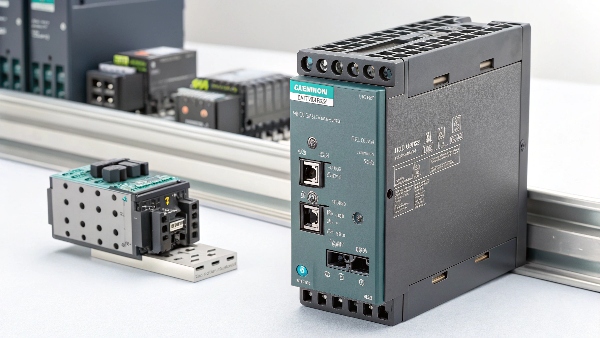
Conclusion
DC UPS systems excel in specialized applications but face major adoption barriers for PCs due to incompatible power standards, entrenched infrastructure, and marginal benefits for most users. Industrial DC power continues to grow while consumer PCs remain firmly AC-powered.

